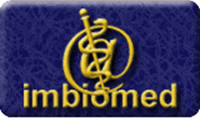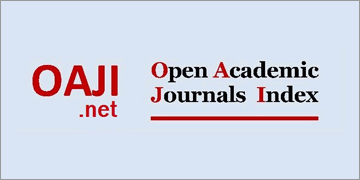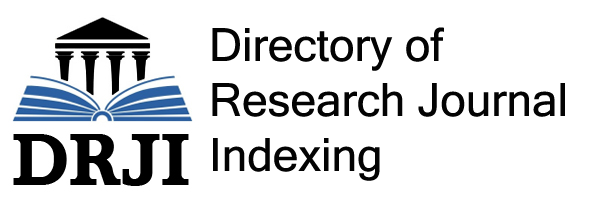Mecanismos efectores de las células fagocíticas estimuladas in vitro con S. Pyogenes vivo e inactivado por calor
Resumen
Introducción: Los estreptococos del Grupo A son patógenos frecuentes en los seres humanos, responsables de diversas infecciones. Diferentes estudios han demostrado mecanismos involucrados en las defensas del huésped frente a la infección por S. pyogenes. S. pyogenes desencadena una respuesta inmune importante con la consiguiente participación de diversos tipos celulares, como polimorfonucleares neutrófilos, macrófagos y células dendríticas, así como las subpoblaciones TH1 y Th2. El presente estudio pretende describir la respuesta de Polimorfonucleares (PMNs) y Mononucleares (MNs) de sujetos normales frente al S. pyogenes vivo (Spv) e inactivado (Spi). Materiales y Métodos: Se separaron los PMNs y MNs de sangre periférica de 48 sujetos donantes sanos. Se incubaron en tubos separados las suspensiones de PMN y MNs en medio RPMI 1640 con 5l las suspensiones de S. pyogenes vivo (Spyv) e inactivado (Spyi). Se evaluaron nitritos por el Método de Griess y TNFα por ELISA ( R& D Systems). En PMNs y MNs se determinó el Estallido Respiratorio (ER) por Citometría de Flujo. Resultados: Estallido Respiratorio. R(x± E.E.): PMNs est. c/Spv: 2,50±0,478; PMNs est. c/Spi: 1,921±0,275; PMNs Basal: 1,282±0,105. P=0,0483. MNs est. c/Spv: 2,56±0,51; MNs est. c/Spi: 1,92±0,27; MNs Basal: 1,21±0,10. Spv vs Spi P>0,05 ns; Spv vs basal P<0,05, Spi vs basal P>0,05ns. Niveles Nitritos(x± E.E.) MNs est c/ Spv, Spi y Basal: 40,75±5,94; 57,85±8,79; 13,28±1,13. MNs Basal vs MNs Spv P<0,01; MNs basal vs MNs Spi P<0,001; MNs Spv vs MNs Spi P= 2,907 ns. PMNs est c/Spv, Spi y Basal: 40,76±6,61; 38,44±6,11; 17,95±2,16. PMNs Basal vs PMNs Spv P<0,05; PMNs Spi vs PMNs Basal P<0,05; PMNs Spi vs PMNs Spv P>0,05 NS. Niveles de TNFα(x± E.E.): PMNs est c/ Spv, Spi y Basal: 223,54±21,49; 202,78±37,37; 100,82±3,23. PMNs Spv vs Spi P>0,05ns; PMNs Spv vs Basal P<0,05; PMNs Spi vs Basal P<0,01. MNs est c/ Spv, Spi y Basal: 98,33±8,16; 128,88±14,16; 55,05±9,10. Spv vs Spi P>0,05 NS; Spv vs Basal P<0,01; Spi vs Basal P<0,05. Discusión: Se determinó que el S. pyogenes tanto vivo como inactivado tiene capacidad para estimular a las células fagocíticas, activando su capacidad oxidativa através del Estallido Respiratorio, la producción de nitritos y la de TNF alfa en sobrenadante de cultivo Celular incrementado su capacidad bactericida.Citas
- Edward L. Kaplan and Alan L. Bisno Antecedent Streptococcal Infection in Acute Rheumatic Fever, Clin Infect Dis. (2006) 43 (6):690-692.
- Kaplan EL. The resurgence of group A streptococcal infections and their sequelae. Eur J Clin Microbiol Infect Dis 1991;10:55-7
- Carlos A. Guzmán, Susanne R. Talay, Gabriella Molinari, Eva Medina and Gursharan S. Chhatwal Protective Immune Response against Streptococcus pyogenes in Mice after Intranasal Vaccination with the Fibronectin-Binding Protein SfbI. 1999. J Infect Dis. 179 (4): 901-06
- Ulrich von PawelRammingen Streptococcal IdeS and Its Impact on Immune Response and Inflammation J Innate Immun 2012;4:132.
- Von Pawel-Rammingen U., Streptococcal IdeS and its impact on immune response and inflammation. J Innate Immun. 2012;4(2):132-40. Epub 2012.
- Moncada S, Higgs EA: Endogenous nitric oxide physiology, pathology and clinical relevance. Eur J Clin Invest 1991; 21: 361-374. .
- Gratz N, Hartweger H, Matt U, Kratochvill F, Janos M, et al. (2011) Type I Interferon Production Induced by Streptococcus pyogenes-Derived Nucleic Acids Is Required for Host Protection. PLoS Pathog 7(5): e1001345
- Lövkvist L., Sjölinder H., Wehelie R., Aro H. , ANorrby-Teglund A., Laura Plant L., Jonsson A.B.CD46 Contributes to the Severity of Group A Streptococcal Infection Infect. Immun. September 2008 76: no. 9 3951-3958.
- M.P Richardson., A simple flow cytometry assay using dihydrorhodamine for the measurement of the neutrophil respiratory burst in whole blood: comparison with the quantitative nitrobluetetrazolium test. Journal of Immunological Methods 1998. Volume 219,187–193
- Adarmes H, JP Solís, A Müller, M Galleguillos. Nitrite determination as a stable metabolite of nitric oxide in synovial fluid of equine metacarpophalangeal joint. Arch Med. 2009 Vet 41, 255-259.
- Gougerot-Pocidalo M.A., el Benna J., Elbim C., Chollet-Martin S., Dang M.C. Regulation of human neutrophil oxidative burst by pro- and anti-inflammatory cytokines. J Soc Biol. 2002; 196(1):37-46. Review.
- Heumann D., Barras C., Severin A., Glauser M.P., and Tomasz A., Gram-positive cell walls stimulate synthesis of tumor necrosis factor alpha and interleukin-6 by human monocytes. Infect Immun. 1994 Jul; 62(7):2715-21.
- Sriskandan S., Moyes D., Buttery L.K., Wilkinson J., Evans T.J., et al. The role of nitric oxide in experimental murine sepsis due to pyrogenic exotoxin A-producing Streptococcus pyogenes.1997 Infect. Immun. 65 (1997) 1767–1772.
- Timmerman C.P., Mattsson E., Martinez-Martinez L., De Graaf L., Van Strijp J.A.G., et al. Induction of release of tumor necrosis factor from human monocytes by staphylococci and staphylococcal peptidoglycans. Infect. Immun. 61 (1993) 4167–4172
- Neutrophil-derived cytokines: potential therapeutic targets in inflammation. Inflame. Allergy 4 (2005) 273-279. Junio de 2005.
- Blake G.J., Ridker P.M. Tumour necrosis factor-α, inflammatory biomarkers, and atherogenesis. Eur Heart J 23 (2002) 345–347.
- Silva M.T., When two is better than one: macrophages and neutrophils work in concert in innate immunity as complementary and cooperative partners of a myeloid phagocyte system. J. Leukoc. Biol. 87 (2010) 93-106.
- Steinstraesser L., KoehleT. Jacobsen F. Daigeler A., Goertz O, Langer S , Kesting M , Steinau H , Eriksson E , and Hirsch T. Host Defense Peptides in Wound Healing. 2008. Mol Med 14 (7 - 8) 528 – 537.
- Påhlman L.I., Mörgelin M., Eckert J., Johansson L., Russell W., et al. Streptococcal M protein: A Multipotent and powerful inducer of inflammation. . Immunol. 177 (2006) 1221-1228.
- Roos D., van Bruggen R., Meischl C. Oxidative killing of microbes by neutrophils. Microbes Infect. 5 (2003) 1307–1315.
- Lonchampt M.O., Auguet M., Delaflotte S., Goulin-Schulz J., Chabrier P.E., et al. Lipoteichoic acid: a new inducer of nitric oxide synthase. J. Cardiovasc. Pharmacol. 12 (Suppl.) S145–S147. 6. Gregory M. Barton A calculated response: control of inflammation by the innate immune system J Clin Invest. 2008 February 1; 118(2): 413–420.
Revista Científica
CIMEL
Ciencia e Investigación Médica Estudiantil Latinoamericana
Órgano Oficial de Difusión Científica de la Federación Latinoamericana de Sociedades Científicas de Estudiantes de Medicina FELSOCEM
ISSN versión electrónica: 1992 - 4240
ISSN versión impresa: 1680 - 8398
DECLARACIÓN:
- En caso que el artículo fuese aprobado para su publicación en la Revista Ciencia e Investigación Médica Estudiantil Latinoamericana (CIMEL), cedo mis derechos patrimoniales y autorizo a dicha Revista a la publicación y divulgación del documento en las condiciones, procedimientos y medios que disponga CIMEL.
- Certifico que he contribuido directamente al contenido intelectual de este manuscrito, a la génesis y análisis de sus datos, por lo cual estoy en condiciones de hacerme públicamente responsable de él y acepto que mi nombre figure en la lista de autores.
- Garantizo que el artículo es un documento original y no ha sido publicado, total ni parcialmente, en otra revista científica, salvo en forma de resumen o tesis (en cuyo caso adjunto copia del resumen o carátula de la tesis).
- En caso de que se haya sido publicado previamente, adjunto la autorización original de la Revista donde se realizó la publicación primaria, para su publicación duplicada en la Revista CIMEL.
- No recibiré regalías ni ninguna otra compensación monetaria de parte de la Revista CIMEL por la publicación del artículo.
- No he incurrido en fraude científico, plagio o vicios de autoría; en caso contrario eximo de toda responsabilidad a laRevista CIMEL; y me declaro como el único responsable.
- Me comprometo a no presentar este artículo a otra revista para su publicación, hasta recibir la decisión editorial de la Revista CIMEL sobre su publicación.
- Adjunta a mi firma, incluyo cuál fue mi participación en la elaboración del artículo que presento para publicar a la Revista CIMEL (Según tabla de códigos de participación).
|
|
Códigos de Participación: (Anote estos códigos en la parte correspondiente a su nombre, de acuerdo a su participación dentro del trabajo enviado). |





.png)





 Todo el contenido de esta revista, está bajo
Todo el contenido de esta revista, está bajo  Facebook
Facebook